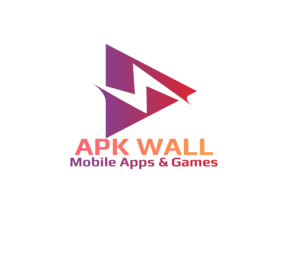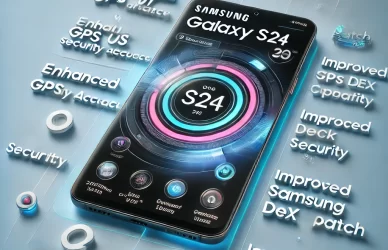A new era for Google AI
Google AI Workspace is a suite of cloud-based productivity and collaboration tools that helps millions of people work smarter and faster. Whether it’s creating documents, sending emails, or making presentations, Google Workspace enables users to get things done with ease and efficiency.
But what if Google Workspace could do even more for you? What if it could help you write better, create more engaging content, and even generate new ideas for your projects?
That’s where generative AI comes in. Generative AI is a branch of artificial intelligence that can create new data or content based on existing data or content. For example, generative AI can produce realistic images, audio, video, text, code, and more.
Google has been at the forefront of generative AI research and development for years. It has created groundbreaking models such as GPT-3, BERT, DALL-E, CLIP, BigGAN, WaveNet, and many others. These models have shown impressive capabilities in various domains such as natural language processing (NLP), computer vision (CV), speech synthesis (TTS), music generation (MIDI), and more.
Google Workspace Introduces AI-Powered Writing Features
Introduction Google Workspace has been offering various helpful products to its users for over two decades. The advancement of AI has been transformational in building products that have earned a valued place in people’s lives. In recent years, AI-powered features have been added to the Google Workspace productivity suite that is already helping billions of users save more time with Smart Compose and Smart Reply, generate summaries for Docs, and stay safe against malware and phishing attacks. In this article, we will discuss how Workspace is evolving to incorporate AI as a collaborative partner that is always there to help users achieve their goals.
What are the new generative AI experiences in Workspace? Google Workspace is now making it possible for its users to harness the power of generative AI to create, connect, and collaborate like never before. The first set of AI-powered writing features has been introduced in Docs and Gmail to trusted testers. Google Workspace’s mission is to connect people so they can create, build and grow together. Advances in generative AI are allowing Workspace to deliver on this mission in new ways. The new features that users will be able to use are:
- Draft, reply, summarize, and prioritize your Gmail
- Brainstorm, proofread, write, and rewrite in Docs
- Bring creative vision to life with auto-generated images, audio, and video in Slides
- Go from raw data to insights and analysis via auto-completion, formula generation, and contextual categorization in Sheets
- Generate new backgrounds and capture notes in Meet
- Enable workflows for getting things done in Chat
What is the first set of AI-powered features in Docs and Gmail? Google Workspace is embedding generative AI in Docs and Gmail to help people get started writing. The AI will save users time and effort by generating a draft instantly. Users can continue to refine and edit the draft with the help of AI suggestions. Finding the right tone and style can be tricky at times. For these common scenarios and many more, Google Workspace is adding new generative AI capabilities to help users rewrite. AI suggestions will be available to help users adopt a more formal tone in their emails or transform bullets into a more polished summary to share with their team.
How will users be in control of AI-based capabilities? Google Workspace is designing its products in accordance with Google’s AI Principles that keep the user in control, letting AI make suggestions that users can accept, edit, and change. The corresponding administrative controls will also be delivered so that IT can set the right policies for their organization. The AI is no replacement for the ingenuity, creativity, and smarts of real people. Therefore, AI-based capabilities get better with human feedback.
Now Google is bringing the power of generative AI to Google Workspace users and developers through three new features:
– **AI composition for Google Workspace**: This feature allows users to automatically generate drafts based on prompts in Docs and Gmail. For example, you can type “write an email to my boss about my progress” and get a suggested email draft that you can edit or send as is. Or you can type “write a summary of this article” and get a concise overview of the main points. This feature uses Google’s state-of-the-art NLP models such as BERT and PaLM to understand your intent and generate relevant text.
– **Developer prototyping and coding via PaLM**: This feature allows developers to quickly prototype and code applications using generative AI models such as PaLM (Programming Language Model). PaLM is a model that can generate code snippets based on natural language descriptions or examples. For example, you can type “create a function that adds two numbers” or “show me how to use pandas library” and get corresponding code suggestions in Python or other languages. This feature helps developers save time and effort by providing them with useful hints and templates.
– **Validated models for Vertex AI**: This feature allows developers to access pre-trained generative AI models from Google Cloud’s Vertex AI platform. Vertex AI is a unified platform for building and deploying machine learning solutions at scale. It offers various tools such as AutoML (automated machine learning), MLOps (machine learning operations), Explainable AI (interpretable machine learning), etc. Among these tools are validated models: ready-to-use machine learning models that have been tested and verified by Google experts for quality
and performance. These models include generative models such as BigGAN (image generation), WaveNet (speech synthesis), MIDI Me (music generation), etc.
These three features are currently available in preview mode for select customers who sign up for early access. They will be rolled out gradually to all Google Workspace users
and developers in the coming months.
FAQ
Q: What are the benefits of using generative AI in Google Workspace?
A: Generative AI can help you improve your productivity,
creativity, and innovation in Google Workspace by:
– Reducing your workload by automating repetitive or tedious tasks such as writing emails,
documents,
or code snippets.
– Enhancing your skills by providing you with feedback,
suggestions,
or corrections for your writing,
designing,
or coding.
– Inspiring you with new ideas by generating novel content such as images,
audio,
video,
text,
or code based on your inputs or preferences.
Q: How does generative AI work in Google Workspace?
A: Generative AI works in Google Workspace by using deep neural networks
to learn from large amounts of data and produce new data or content based on existing data or content.
For example,
– To generate text based on prompts in Docs or Gmail,
generative AI models use NLP techniques such as word embeddings,
attention mechanisms,
and transformers
to encode the input text into numerical vectors
and decode them into output text that matches the input context
and style.
– To generate code snippets based on natural language descriptions or examples in PaLM,
generative AI models use NLP techniques
Conclusion
Google Workspace is introducing new generative AI experiences that will make it possible for its users to create, connect, and collaborate like never before. The first set of AI-powered writing features has been introduced in Docs and Gmail to trusted testers. Users will be able to draft, reply, summarize, and prioritize their Gmail, brainstorm, proofread, write, and rewrite in Docs, bring creative vision to life with auto-generated images, audio, and video in Slides, go from raw data to insights and analysis via auto-completion, formula generation, and contextual categorization in Sheets, generate new backgrounds and capture notes in Meet, and enable workflows for getting things done in Chat. Users will be in control of AI-based capabilities, and Google Workspace will deliver the corresponding administrative controls so that IT can set the right policies for their organization.





